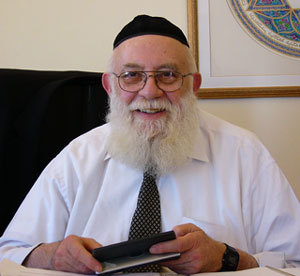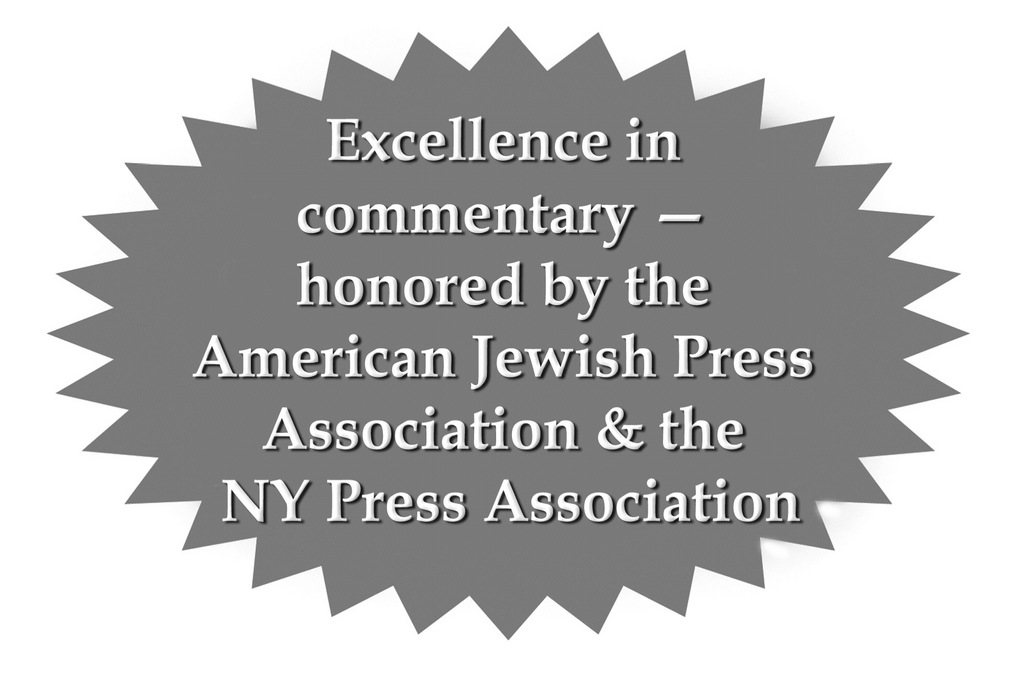Seidemann: The life of a master
From the other side of the bench
Issue of Feb. 13, 2009 / 19 Shevat 5769
My mother, may she rest in peace, also had eight children. But unlike that woman in California, my mother had a husband, a home and a job. In short, my mother and father had a plan, a workable plan to provide for our upbringing. Patchwork solutions, vague assumptions and quick fixes rarely work in family situations or in times of economic crisis affecting the nation and world at large. A plan that does not provide for the long-term security of either a family or a nation’s economy is not a plan.
I’ve been following the to and fro, the revisions and counter revisions, of the proposed stimulus package as it bounces around Congress. The crux of the debate is whether the proposal provides enough direct immediate relief without mortgaging the future. Delayed relief is unacceptable and immediate relief that is going to add trillions to the debt our children will need to bear is also not an option.
Admittedly, the first batch of dole outs was done without a plan as the very industries clamoring for a rescue received the monies only to abuse and misuse the goody bag by lining their own pockets. It’s a lot like giving a woman who already is over her head with six children, eight more embryos to carry. It’s not that every child born is not precious, it’s just that families and economies function best when they work within their tolerable means, when they have a plan.
I have no issue with families or institutions that need to rely on charity of others to exist. However, that is only if and when the family or institution was started, there was a plan to be self-sufficient. If circumstances changed and now the family or institution must rely on the kindness of others, blessed are those that sustain the needy. But if a family or institution is reckless with their initial planning, or worse, has no plan, or even worse, a plan that is predicated on surviving on the backs of others, perhaps family and institution should go back to the drawing board.
Not every institution or organization provides such a unique service that justifies their competing for the same dollars and the same bailout as another institution or organization. No family should be without food and shelter. No family should fail.
On the other hand, certain institutions –– be they banks, automakers, or educational institutions –– need to stand in line, unless they can reorganize or demonstrate their uniqueness. It is incumbent on anyone trying to sell their “plan” to articulate its worthiness. I remember my first boss telling me, “Pretend each client is your first. You will need to sell yourself anew each day to each client.”
Two pioneers in developing plans that explain and make accessible the “Master Plan” have now left this world. With their passing, an incomprehensible void in Jewish education has been created. When Rav Yakov Weinberg zt”l, the late dean of Ner Israel Rabbinical College in Baltimore, MD passed away a few years ago, we lost one of the most innovative thinkers in Jewish education. The Rosh Yeshiva’s book on chinuch (Jewish education) is a must read for any parent or educator.
A few days ago Rav Yakov’s brother, Rav Noach Weinberg zt”l, was taken from us. The inspiration behind the modern Baal Teshuva movement, Rav Noach was the founder of the two most prominent “returnee” yeshivot in the world, Aish Hatorah and Ohr Sameach, both in Israel. Throughout the world Rav Noach’s thousands of students follow in his footsteps, educating and embracing. Rav Noach developed an approach to Torah Judaism which explained the “Master, master plan.” A generation of intellectually thirsty Jews demanded depth, and Rav Noach provided it. The Rosh Yeshiva bridged the gap between depth and faith.
And here was his real genius. By enlightening those that were in the dark, he brought more light to those that already could see. By educating the novice, he re-educated the advanced. By teaching the unlearned, he prodded the educated to dig deeper.
Rav Noach, by creating a Baal Teshuva, created simultaneously a Jew who had to teach that Baal Teshuva. Suddenly, Jews who thought they knew it all had to return to the books to be able to keep up with the Baal Teshuva. By exposing the faith of a “returnee,” Rav Noach zt”l caused thousands of already religious Jews to examine and deepen their own faith. Rav Noach caused Jews world wide to examine our heritage, “the plan of all plans.”
Years ago I flew to Israel to meet with Rav Noach zt”l. I had not learned in his yeshiva, but was asked to meet with him for a particular reason. In preparation I purchased his set of his tapes called “The 48 Ways.” They are a series of lectures given by Rav Noach on the 48 ways to acquire Torah knowledge.
As I waited outside his office I kept rehearsing my opening greeting. When I was finally ushered into the office the first words out of my mouth were, “I want the Rosh Yeshiva to know, I have all your tapes.” Rav Noach smiled and said, “I’m assuming you have all of Simon and Garfunkel’s also. The trick is not to have them, but to listen to them.”
We spent an hour or so together, and in that one hour I understood why thousands of people around the world would accept instruction from this rabbi with a plan. Not just any plan, but a master plan explaining the Master’s plan.
Let me share with you one final thought about this wonderful, warm Jew. In Rav Noach’s office, one would find a wall plastered with pictures. They are pictures of his students not as they appeared while in his Yeshiva, but as they appeared years later with their children. When asked why, Rav Noach responded, “all of my students are my sons. And if all of my students are my sons, then these are my grandchildren, and which proud Zaidie doesn’t have pictures of his grandchildren on his wall?”
Oh, what a master.
David Seidemann is a partner with the law firm of Seidemann & Mermelstein. He can be reached at (718) 692-1013 and at ds@lawofficesm.com.

 56.0°,
Overcast
56.0°,
Overcast 







